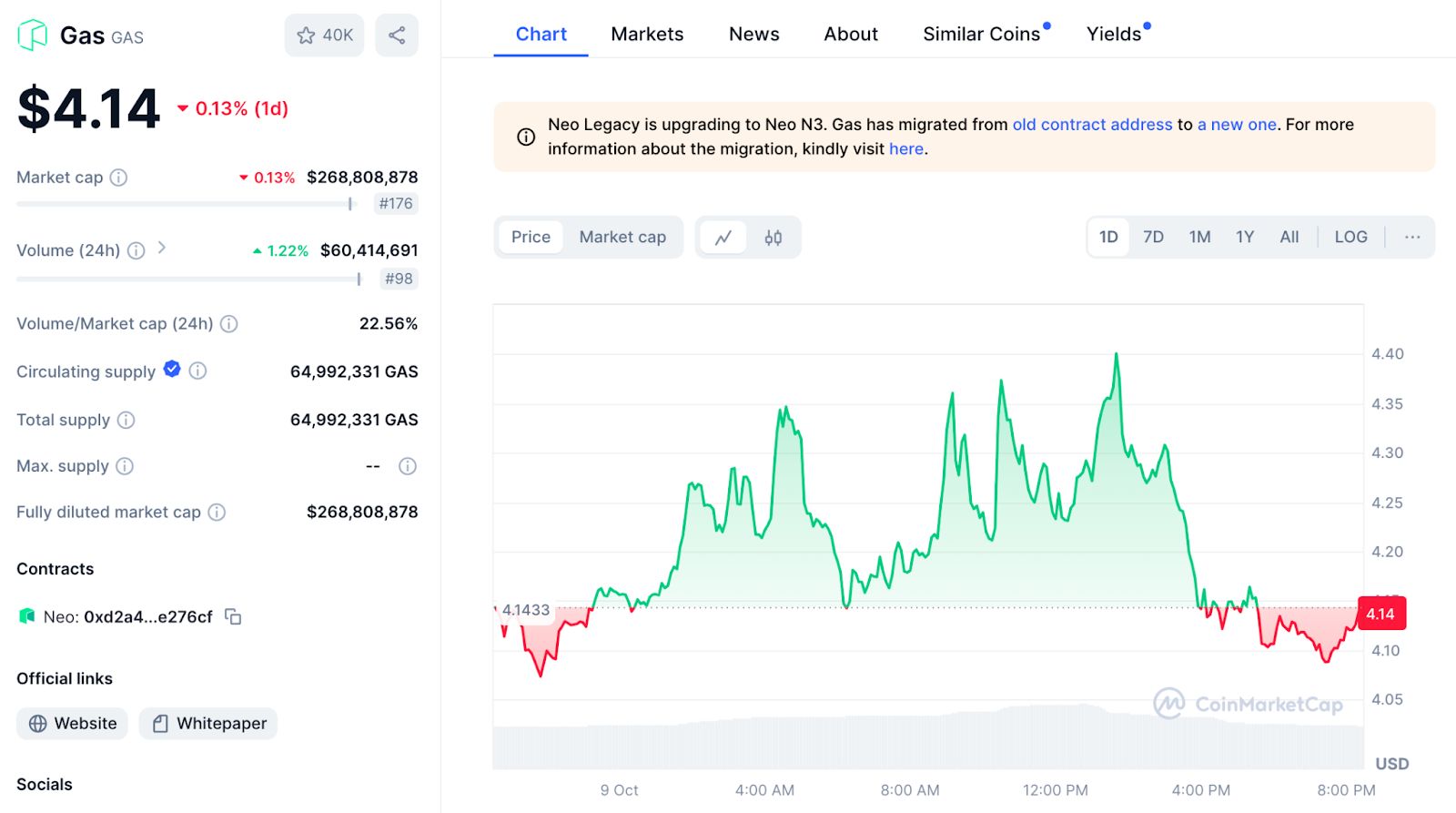Particle Network (PARTI) Overview
Particle Network is a Layer-1 blockchain designed to enable chain abstraction, providing users with a seamless experience across Web3. The network's native token, PARTI, powers this ecosystem, offering various use cases and benefits.¹
Key Features
- *Universal Accounts*: Particle Network's Universal Accounts allow users to manage multiple chains with a single account and unified balance.
- *Universal Liquidity*: The network consolidates liquidity from different chains, enabling borderless transactions.
- *Universal Gas*: Users can pay gas fees with any token on any chain, simplifying the transaction process.
Use Cases
- *Decentralized Finance (DeFi)*: PARTI can be used for lending, borrowing, and trading on decentralized exchanges.
- *Gaming*: PARTI can be used for in-game purchases and rewards in blockchain-based games.
- *Governance*: PARTI holders can participate in governance decisions for the Particle Network ecosystem.
Market Performance
- *Current Price*: $0.3151
- *Market Capitalization*: $73.44 million
- *24h Trading Volume*: $339.36 million
- *Circulating Supply*: 233 million PARTI tokens
- *Maximum Supply*: 1 billion PARTI tokens
Conclusion
Particle Network's innovative approach to chain abstraction and its native token, PARTI, offer a promising solution for users and developers. With its growing adoption and use cases, PARTI has the potential to become a valuable asset in the blockchain ecosystem.² ³
$PARTICOIN’s Roadmap & Next Trading Plans: What’s Coming in 2025?
With $PARTICOIN ($PARTI) gaining traction in the crypto market, investors and traders are eager to understand its roadmap and next trading plans for 2025. Will $PARTI see mass adoption, strategic partnerships, and price appreciation, or will it struggle to maintain momentum? Let’s dive deep into its future developments.
1. $PARTICOIN’s Vision and Roadmap for 2025
A strong roadmap is key to determining a project’s long-term viability. Here’s what to expect from $PARTI in 2025:
Q2 2025: Expanding Exchange Listings & Liquidity Growth
New Exchange Listings:
Expansion beyond Bitget to major platforms like Binance, KuCoin, or Bybit.
Listings on decentralized exchanges (DEXs) such as Uniswap and PancakeSwap.
Improved Trading Liquidity:
Liquidity pools and market-making strategies to reduce slippage and improve trade execution.
Staking and farming opportunities to encourage long-term holding.
Q3 2025: Ecosystem Expansion & Real-World Use Cases
Partnerships with DeFi & Web3 Projects:
Integrations with lending protocols, NFT marketplaces, or gaming platforms.
Utility in DeFi staking, yield farming, or governance participation.
Smart Contract Upgrades & Layer-2 Scaling:
Enhanced security and efficiency through Ethereum Layer-2 (Optimistic Rollups, ZK-Rollups).
Faster transactions with lower gas fees to attract mainstream users.
Q4 2025: Mass Adoption & Institutional Interest
Enterprise Adoption & Real-World Payments:
Collaborations with fintech platforms for crypto payment solutions.
Potential use in industries like gaming, supply chain, and e-commerce.
Institutional Investment & Compliance:
Compliance with regulations for institutional-grade adoption.
Attraction of VC funding or large-scale investors to ensure long-term growth.
2. Trading Plans for $PARTICOIN in 2025
To maximize trading opportunities, traders should consider different strategies based on $PARTI’s market performance and roadmap execution.
Short-Term Trading Plans (Q2-Q3 2025)
Swing Trading & Scalping Opportunities:
Watch for price breakouts after new exchange listings or partnerships.
Utilize RSI, MACD, and Bollinger Bands for short-term volatility trades.
Tracking Whale Movements & Volume Surges:
Use on-chain analysis to track large buys and sells from institutional investors.
Monitor Bitget’s liquidity and order book depth for price stability.
Long-Term Investment Strategy (Q4 2025 & Beyond)
Accumulation Strategy:
If $PARTI is showing consistent adoption, buying dips and holding for 2026 could be a strong play.
Look for staking opportunities to earn passive rewards while holding.
Exit Strategy & Profit-Taking:
If $PARTI achieves major price gains, having a profit-taking plan is essential.
Set sell targets based on key Fibonacci levels or moving averages.
3. Risks & Challenges to Watch for in 2025
Despite a promising roadmap, $PARTICOIN faces potential challenges:
Regulatory Uncertainty:
Crypto regulations in major markets (US, EU, China) could impact adoption.
Compliance with new exchange policies for listing approvals.
Competition from Other Projects:
$PARTI must differentiate itself from similar tokens in DeFi, gaming, or payments.
A lack of continuous innovation could lead to market stagnation.
Market Sentiment & Whale Manipulation:
If whales control a large percentage of supply, they could manipulate price swings.
Monitoring on-chain data and social sentiment is key for traders.
Final Verdict: Can $PARTICOIN Succeed in 2025?
✔️ Bullish Outlook If:
Strong exchange expansion and high liquidity sustain trading volume.
Real-world use cases and partnerships drive organic adoption.
Institutional investors start accumulating $PARTI for long-term growth.
❌ Bearish Risks If:
The team fails to deliver on roadmap promises.
Trading volume declines due to lack of new developments.
The market enters a bearish phase, affecting overall crypto sentiment.
If $PARTI successfully executes its roadmap and trading plans, it could become a top-performing altcoin in 2025. However, traders should stay updated on developments and always DYOR (Do Your Own Research) before making trading decisions.
$PARTI
# __Revolutionizing Urban Planning: The Future of Smart Cities__
_
The world is urbanizing at an unprecedented rate, with cities expected to accommodate an additional 2.5 billion people by 2050. To address the challenges of urbanization, cities are turning to smart city technologies, transforming the way we live, work, and interact with our urban environments. In this article, we'll explore the future of smart cities, highlighting their benefits, challenges, and potential applications.
# Benefits of Smart Cities
Smart cities offer several benefits, including:
1. *Improved Efficiency*: Smart cities optimize energy consumption, water usage, and waste management, reducing costs and environmental impact.
2. *Enhanced Public Safety*: Smart cities integrate data from various sources, enabling law enforcement to respond more effectively to emergencies and prevent crime.
3. *Increased Sustainability*: Smart cities promote sustainable transportation, green spaces, and energy-efficient buildings, reducing greenhouse gas emissions and improving air quality.
4. *Better Quality of Life*: Smart cities provide citizens with access to real-time information, enabling them to make informed decisions about their daily lives.
5. *Economic Growth*: Smart cities attract businesses, talent, and investment, driving economic growth and competitiveness.
# Challenges of Smart Cities
Smart cities also face several challenges, including:
1. *Infrastructure Costs*: Smart city infrastructure requires significant investment in sensors, networks, and data analytics platforms.
2. *Data Management*: Smart cities generate vast amounts of data, requiring effective management, storage, and analysis.
3. *Cybersecurity*: Smart cities are vulnerable to cyber threats, requiring robust security measures to protect data and infrastructure.
4. *Public Engagement*: Smart cities require public engagement and participation, ensuring that citizens are informed and involved in the decision-making process.
5. *Equity and Access*: Smart cities must address issues of equity and access, ensuring that all citizens have access to smart city services and benefits.
# Applications of Smart City Technologies
Smart city technologies are being applied in various ways, including:
1. *Intelligent Transportation Systems*: Smart cities are deploying intelligent transportation systems, optimizing traffic flow, reducing congestion, and promoting sustainable transportation.
2. *Smart Energy Management*: Smart cities are implementing smart energy management systems, optimizing energy consumption, reducing waste, and promoting renewable energy sources.
3. *Public Safety and Security*: Smart cities are integrating data from various sources, enabling law enforcement to respond more effectively to emergencies and prevent crime.
4. *Waste Management and Recycling*: Smart cities are implementing smart waste management and recycling systems, reducing waste, increasing recycling rates, and promoting sustainability.
5. *Smart Buildings and Architecture*: Smart cities are promoting smart building design and architecture, reducing energy consumption, improving air quality, and enhancing occupant comfort.
# Conclusion
The future of urban planning is smart cities, offering a more efficient, sustainable, and livable way of life. While smart cities face several challenges, including infrastructure costs, data management, and cybersecurity, the benefits of smart cities, including improved efficiency, enhanced public safety, and increased sustainability, make them an attractive option for many cities and governments.
# Recommendations
1. *Invest in Smart City Infrastructure*: Invest in smart city infrastructure, including sensors, networks, and data analytics platforms.
2. *Develop Data Management and Analytics Capabilities*: Develop data management and analytics capabilities, enabling cities to effectively collect, store, and analyze data.
3. *Implement Robust Cybersecurity Measures*: Implement robust cybersecurity measures, protecting data and infrastructure from cyber threats.
4. *Promote Public Engagement and Participation*: Promote public engagement and participation, ensuring that citizens are informed and involved in the decision-making process.
5. *Address Equity and Access Concerns*: Address equity and access concerns, ensuring that all citizens have access to smart city services and benefits.
# __Revolutionizing Urban Planning: The Future of Smart Cities__
_
The world is urbanizing at an unprecedented rate, with cities expected to accommodate an additional 2.5 billion people by 2050. To address the challenges of urbanization, cities are turning to smart city technologies, transforming the way we live, work, and interact with our urban environments. In this article, we'll explore the future of smart cities, highlighting their benefits, challenges, and potential applications.
# Benefits of Smart Cities
Smart cities offer several benefits, including:
1. *Improved Efficiency*: Smart cities optimize energy consumption, water usage, and waste management, reducing costs and environmental impact.
2. *Enhanced Public Safety*: Smart cities integrate data from various sources, enabling law enforcement to respond more effectively to emergencies and prevent crime.
3. *Increased Sustainability*: Smart cities promote sustainable transportation, green spaces, and energy-efficient buildings, reducing greenhouse gas emissions and improving air quality.
4. *Better Quality of Life*: Smart cities provide citizens with access to real-time information, enabling them to make informed decisions about their daily lives.
5. *Economic Growth*: Smart cities attract businesses, talent, and investment, driving economic growth and competitiveness.
# Challenges of Smart Cities
Smart cities also face several challenges, including:
1. *Infrastructure Costs*: Smart city infrastructure requires significant investment in sensors, networks, and data analytics platforms.
2. *Data Management*: Smart cities generate vast amounts of data, requiring effective management, storage, and analysis.
3. *Cybersecurity*: Smart cities are vulnerable to cyber threats, requiring robust security measures to protect data and infrastructure.
4. *Public Engagement*: Smart cities require public engagement and participation, ensuring that citizens are informed and involved in the decision-making process.
5. *Equity and Access*: Smart cities must address issues of equity and access, ensuring that all citizens have access to smart city services and benefits.
# Applications of Smart City Technologies
Smart city technologies are being applied in various ways, including:
1. *Intelligent Transportation Systems*: Smart cities are deploying intelligent transportation systems, optimizing traffic flow, reducing congestion, and promoting sustainable transportation.
2. *Smart Energy Management*: Smart cities are implementing smart energy management systems, optimizing energy consumption, reducing waste, and promoting renewable energy sources.
3. *Public Safety and Security*: Smart cities are integrating data from various sources, enabling law enforcement to respond more effectively to emergencies and prevent crime.
4. *Waste Management and Recycling*: Smart cities are implementing smart waste management and recycling systems, reducing waste, increasing recycling rates, and promoting sustainability.
5. *Smart Buildings and Architecture*: Smart cities are promoting smart building design and architecture, reducing energy consumption, improving air quality, and enhancing occupant comfort.
# Conclusion
The future of urban planning is smart cities, offering a more efficient, sustainable, and livable way of life. While smart cities face several challenges, including infrastructure costs, data management, and cybersecurity, the benefits of smart cities, including improved efficiency, enhanced public safety, and increased sustainability, make them an attractive option for many cities and governments.
# Recommendations
1. *Invest in Smart City Infrastructure*: Invest in smart city infrastructure, including sensors, networks, and data analytics platforms.
2. *Develop Data Management and Analytics Capabilities*: Develop data management and analytics capabilities, enabling cities to effectively collect, store, and analyze data.
3. *Implement Robust Cybersecurity Measures*: Implement robust cybersecurity measures, protecting data and infrastructure from cyber threats.
4. *Promote Public Engagement and Participation*: Promote public engagement and participation, ensuring that citizens are informed and involved in the decision-making process.
5. *Address Equity and Access Concerns*: Address equity and access concerns, ensuring that all citizens have access to smart city services and benefits.


 最低価格
最低価格 最高価格
最高価格 

















































Gasのソーシャルデータ
直近24時間では、Gasのソーシャルメディアセンチメントスコアは3で、Gasの価格トレンドに対するソーシャルメディアセンチメントは強気でした。全体的なGasのソーシャルメディアスコアは0で、全暗号資産の中で753にランクされました。
LunarCrushによると、過去24時間で、暗号資産は合計1,058,120回ソーシャルメディア上で言及され、Gasは0.01%の頻度比率で言及され、全暗号資産の中で366にランクされました。
過去24時間で、合計656人のユニークユーザーがGasについて議論し、Gasの言及は合計67件です。しかし、前の24時間と比較すると、ユニークユーザー数は増加で53%、言及総数は減少で18%増加しています。
X(Twitter)では、過去24時間に合計1件のGasに言及したポストがありました。その中で、0%はGasに強気、100%はGasに弱気、0%はGasに中立です。
Redditでは、過去24時間にGasに言及した2件の投稿がありました。直近の24時間と比較して、Gasの言及数が0%減少しました。
すべてのソーシャル概要
3